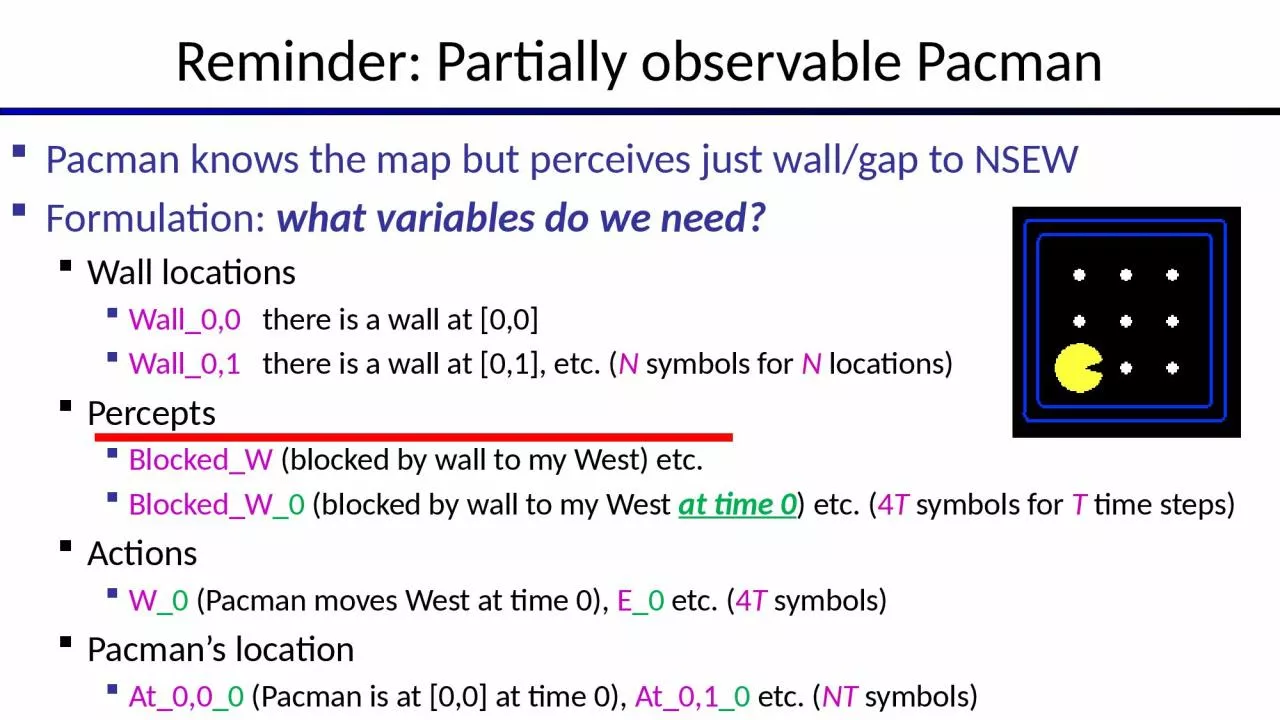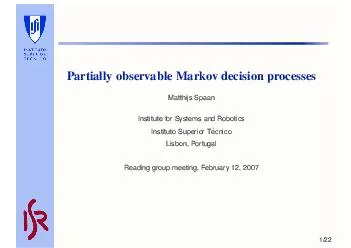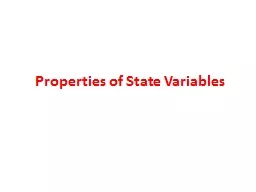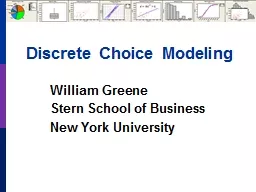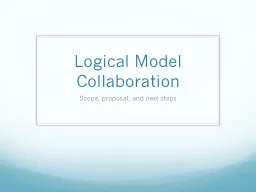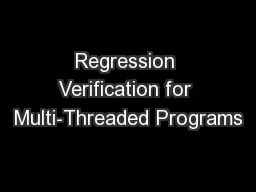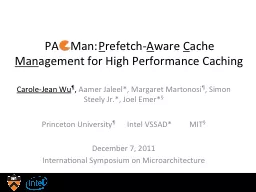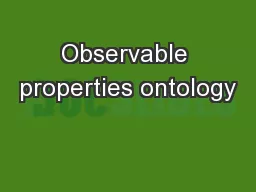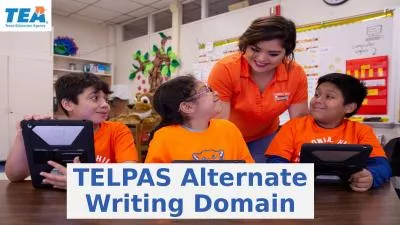PPT-Reminder: Partially observable Pacman
Author : UnicornLove | Published Date : 2022-08-04
Pacman knows the map but perceives just wallgap to NSEW Formulation what variables do we need Wall locations Wall00 there is a wall at 00 Wall01 there is a wall
Presentation Embed Code
Download Presentation
Download Presentation The PPT/PDF document "Reminder: Partially observable Pacman" is the property of its rightful owner. Permission is granted to download and print the materials on this website for personal, non-commercial use only, and to display it on your personal computer provided you do not modify the materials and that you retain all copyright notices contained in the materials. By downloading content from our website, you accept the terms of this agreement.
Reminder: Partially observable Pacman: Transcript
Download Rules Of Document
"Reminder: Partially observable Pacman"The content belongs to its owner. You may download and print it for personal use, without modification, and keep all copyright notices. By downloading, you agree to these terms.
Related Documents

